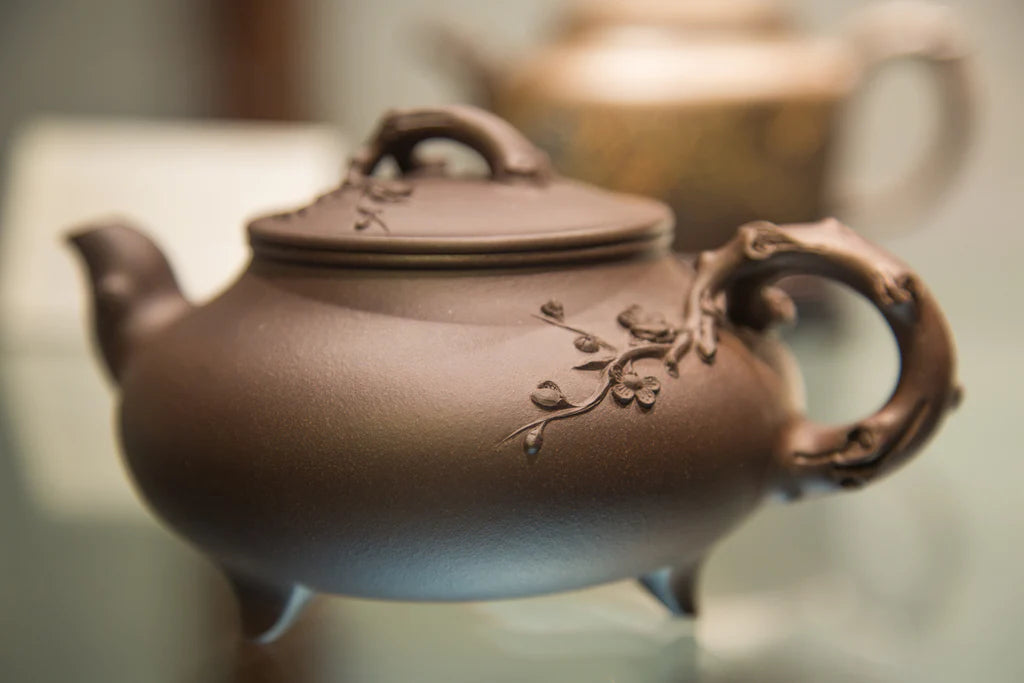The Best Teas for a Yixing Teapot

When you think of a Yixing teapot, the image that will most likely come to your mind is a beautiful purple-colored teapot. Yixing pots are recognized for their unique ability to enhance the taste and aroma of different tea leaves.
Hence, using a Yixing teapot as your primary cup to drink tea can result in an even more enhanced experience. However, as with any other type of pottery or clay vessel, it's essential to match the properties of your Yixing pot with its contents. If you own a Yixing teapot but don't know what type of tea to put in it, keep reading for some valuable tips!
Types of Yixing Teapots
Although there isn't one specific type of Yixing teapot, there are a few different types. Nonetheless, every kind of Yixing pot is usually made with a different clay, which makes it easier to know which teas to pair with every kind of Yixing pot.
-
Zisha Yixing Pot: This is the most popular type of Yixing pot, as well as the oldest. As the name suggests, zisha pots are traditionally made from zisha clay, a clay found in the Yixing region of China.
Zisha Yixing pots are usually dark in color and look almost like earthenware. Zisha pots come in all shapes and sizes, ranging from tiny teacups to large teapots. - Huang Yixing Pot: Unlike zisha pots, which are typically dark in color, Huang Yixing pots are usually reddish brown. Like zisha pots, however, they come in all shapes and sizes. Huang Yixing pots are made from a different kind of clay than zisha pots, known as "yellow" clay.
What is a Yixing Teapot?
Yixing teapots are teapots that are made of a particular type of clay that is found in the Yixing region of China. The clay used to make Yixing pots is porous, allowing the teapot to absorb the tea leaves' fragrance and flavor over time.
This feature makes Yixing teapots unique and ideal for enjoying various tea leaves. Yixing teapots usually come in three colors – red, purple, and yellow.
Red Yixing pots are made from zisha clay, whereas purple ones are made from zisha and kaolinite clay. Yellow Yixing pots are made from zisha and kaolinite clay.
Which Tea Should You Use in a Yixing Teapot?
When picking the correct type of tea to put in a Yixing teapot, you should consider the following:
- Color: The color of the tea leaves is an essential factor to keep in mind. Since Yixing pots are usually purple, red, or yellow, matching the color of the tea leaves with that of the Yixing pot is essential.
- Type of Tea: Another critical factor you'll want to consider is the tea you're using. You should pick a tea that has similar properties to your
- Yixing pot: For example, the flavor will only be enhanced if you use a dark roasted oolong tea in a dark Yixing pot.
Other Factors to Consider When Choosing Tea for a Yixing Pot
If you keep these three factors in mind when choosing the suitable tea leaves for your Yixing pot, you should find the perfect type of tea to put in your Yixing pot. It can be beneficial if you own a Yixing pot but know which tea to put in.
Temperature: The temperature you usually drink is another essential factor when choosing a tea to put in a Yixing pot. For example, if you typically drink tea that is best drank at temperatures below 80°C, you'd want to use it in a Yixing pot for such tea leaves.
Black and Dark Roasted Oolong Tea
Black roasted oolong teas are usually best suited for dark Yixing pots. Oolong teas roasted for a long time are known for having solid and bold flavors. These flavors are enhanced even more when put in a dark Yixing pot.
Black roasted oolong teas are commonly grown in the Fujian Province of China, which is also the place where most dark Yixing pots are made. Hence, this combination makes sense since the properties of the two items are already well-matched.
Black roasted oolong teas are best enjoyed when they are first brewed at a low temperature, around 70°C. Using a dark Yixing pot is not only aesthetically pleasing but also makes the flavor of this tea even more special.
Green and Light Roasted Oolong Tea
Green and lightly roasted oolong teas are best suited for Yixing pots that are either purple, yellow or green. Oolong teas roasted for a short time are known for their light, floral aromas. These oolong teas are best enjoyed when brewed at a low temperature, around 80°C.
Green and lightly roasted oolong teas are usually grown in the Anxi and Wuyi regions of China, which are also places where purple, yellow, and green Yixing pots are made. This combination makes sense since the properties of each item are already well-matched. A purple, yellow, or green Yixing pot with a lightly roasted oolong tea is a great way to enjoy them even more.
Black and Red Roasted Pu-erh Tea
Black and red roasted pu-erh teas are best suited for Yixing pots that are either yellow or purple. Pu-erh teas roasted for a long time have a robust and bold flavor. These teas are best enjoyed when brewed at a high temperature, around 100°C.
Black and red roasted pu-erh teas are often grown in the Yunnan Province of China, where Yixing pots that are yellow and purple are made. This combination makes sense since the properties of each item are already well-matched. A yellow or purple Yixing pot with black or red roasted pu-erh tea is a great way to enjoy them even more.
Green, Yellow, and Dark Pu-erh Tea
Green, yellow, and dark pu-erh teas are best suited for Yixing pots that are either purple or yellow. Pu-erh teas of all shades are known for having solid and bold flavors. These teas are best enjoyed when brewed at a high temperature, around 100°C.
Green, yellow, and dark pu-erh teas are grown in the Yunnan Province of China, where purple and yellow Yixing pots are made. This combination makes sense since the properties of each item are already well-matched. A purple or yellow Yixing pot with green, yellow, or dark pu-erh tea is a great way to enjoy them even more.
Conclusion
Finally, when choosing the right type of tea to put in a Yixing pot, you should keep in mind the properties of your teapot and the type of tea you're using. You'll want to make sure the color of the tea leaves matches that of the Yixing pot and that the kind of tea you're using has similar properties to the Yixing pot.
